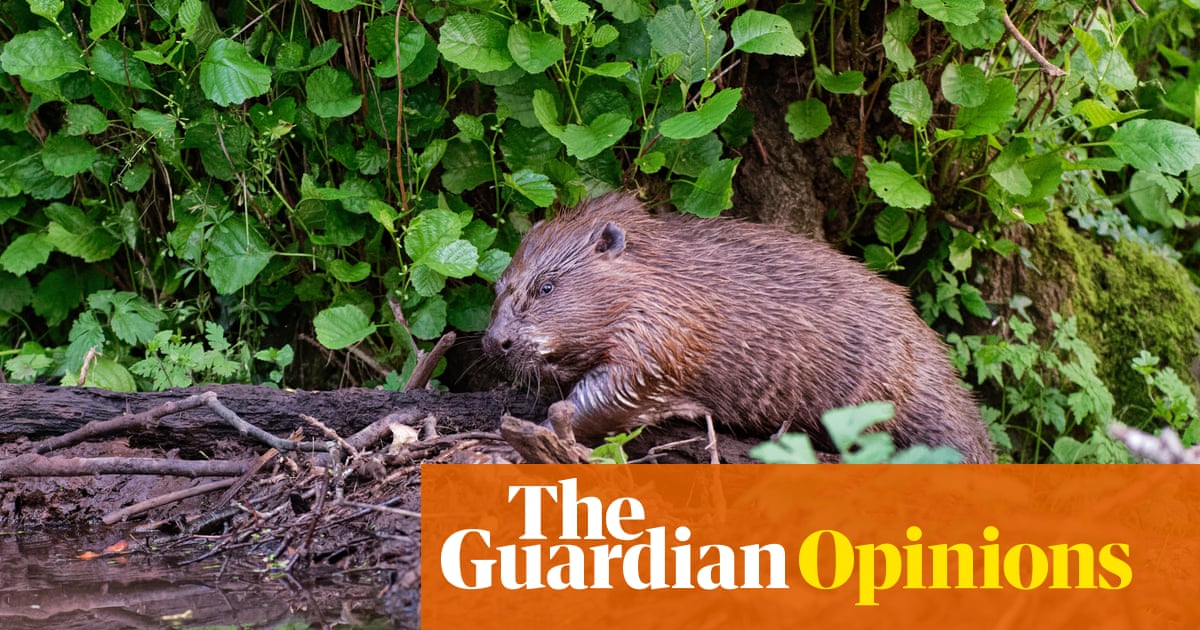The beaver has made an amazing comeback in the Netherlands. Extinct in the early 19th century, it was reintroduced in 1988, and now there are an estimated 7,000 beavers roaming around. Compared with England, where the beaver population is estimated at 500, that’s quite a feat.
But there’s a significant downside to the booming Dutch beaver population. Beavers are increasingly digging burrows and tunnels under roads, railways and – even more worrying – in dykes. For a country where a quarter of the land sits below sea level, this is not a minor problem – especially as beavers are not exactly holding back when digging.
“We’ve found tunnels stretching up to 17 metres into a dyke. Wide enough for a grown man to fit in. That’s alarming,” says Jelmer Krom of the Rivierenland water board. Rivierenland is a region in the middle of the Netherlands, crisscrossed by big rivers, where dykes are crucial for keeping high water at bay. If a major dyke gives way, it would cause a serious flood affecting thousands of people.
When it comes to the Dutch dykes, beavers tend to be in the wrong place at the wrong time. Just when the water is high, they start digging in the dykes. When water levels rise and flood their burrow, they start digging higher up into the dyke. That’s how you end up with those long tunnels which put the dykes at risk.
“When the water is really high, I’m lying in bed at night with my fingers crossed, praying the beavers aren’t wreaking havoc somewhere,” confesses Cindy de Jonge-Stegink, a beaver consultant in the north of the Netherlands. Up there, where the flood defences are often very narrow – sometimes just 15 metres wide – De Jonge-Stegink says they have come across beaver tunnels 10 metres long.
It is quite a challenge to locate beaver burrows because their entrances are under water, and as yet there are no effective techniques for mapping them. During high water, special patrols go out at night with thermal-imaging cameras to spot where beavers are active, but this method doesn’t always yield the desired results.
Also, when a beaver that’s causing problems is found, it can only be killed in exceptional circumstances, because beavers are a protected species in the Netherlands. Moving it doesn’t do much good either, as the beaver tends simply to return. So the Dutch have to turn to other methods to keep their beavers somewhat under control: making riverbanks less attractive to beavers by removing willow thickets, reinforcing dykes with mesh to make them beaver proof, or digging out and sealing burrows. It’s a lot of work, and it needs to be done more and more often.
“Five years ago, we had to dig out a beaver burrow about 15 times a year in our region. That’s gone up to 40 or 50 times a year. And it’s costing us a pretty penny,” says Krom.
In the hilly province of Limburg, a landscape more comparable to England, the problems are of a different nature. Beavers build dams in brook valleys, causing flooding issues for industry, farmers and locals. This is not as serious as a dyke breach in a polder landscape, below the water line, but it is still keenly felt.
And as the beaver population grows rapidly, the animals increasingly venture into agricultural areas, where farmers find their tractors sinking into beaver burrows or even into residential areas. “I know mothers who take their children to say goodnight to the beavers before bedtime. That makes my green heart leap,” says De Jonge-Stegink. “Until those beavers start digging up their gardens, of course.”
Beaver damage is already costing the Dutch millions of euros , and in the future the costs will only rise. Is it all worthwhile? The Dutch government, conservation managers and nature lovers think so. Because beavers, with their astonishing activities, enrich nature and promote biodiversity. By building dams, they create beaver ponds where all sorts of new plant and animal species emerge. With these dams they retain water, which is important as summers become increasingly dry. During rainy periods, their system of dams and canals helps with water drainage. And these are just a few examples of what beavers are capable of.
That’s why these animals can evoke strong emotions in Dutch nature lovers. Some even think that human structures like transportation routes should work around the presence of beavers. Still, the northern Netherlands has recently introduced controls in the form of zoning – designating red zones where beavers are not welcome and culling is allowed.
The state recognises the problem and has now rolled out a national beaver protocol. Previously each of the 12 Dutch provinces had its own beaver regulations, but now there’s one set of rules for everyone. This is a step forward, but in the future the Dutch might need to introduce zoning nationwide. It’s simply not realistic to allow beavers in vulnerable, low-lying polder areas – the risks are just too high.
The Dutch beaver experiment comes with a sharp edge in spite of, or maybe because of, its success. Beavers are astounding, industrious environmental engineers – but you need to be quite sure about what you are doing when you invite them in.

